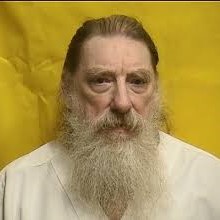
b: 1946
George W. Skatzes
Summary
Name:
George W. SkatzesYears Active:
1979 - 1993Birth:
March 29, 1946Status:
Awaiting ExecutionClass:
MurdererVictims:
4Method:
Strangulation / Bludgeoning / StabbingNationality:
USA
b: 1946
George W. Skatzes
Summary: Murderer
Name:
George W. SkatzesStatus:
Awaiting ExecutionVictims:
4Method:
Strangulation / Bludgeoning / StabbingNationality:
USABirth:
March 29, 1946Years Active:
1979 - 1993Date Convicted:
April 29, 1983bio
George William Skatzes was born on March 29, 1946. Before the events that would land him on death row, Skatzes had already been convicted of murder. In 1979, he was sentenced to life in prison for the fatal shooting of Arthur Smith, an individual he reportedly encountered during a violent altercation. The crime marked the beginning of Skatzes’ long-term imprisonment and placed him within the high-risk population of Ohio’s maximum-security facilities.
By the time of the 1993 Lucasville prison riot, Skatzes was already serving his life sentence and had become deeply embedded in the prison’s internal gang structure. He was affiliated with the Aryan Brotherhood and was one of its most visible figures during the uprising. Skatzes was older than most of the other inmates involved and was said to have taken on a leadership role during the eleven-day siege.
murder story
George Skatzes’ involvement in murder spans two key periods: the 1979 killing of Arthur Smith and the 1993 Lucasville prison riot that left ten men dead, including a corrections officer.
On Easter Sunday, April 11, 1993, a coalition of prison gangs—including the Aryan Brotherhood, the Gangster Disciples, and Black Muslims—staged a riot over grievances such as overcrowding, lack of medical rights, and specifically, a tuberculosis test that Muslim inmates claimed violated their religious beliefs. What began as a protest quickly escalated into an eleven-day standoff with prison officials and law enforcement.
During the riot, Skatzes was identified as a prominent figure within the inmate leadership council. He was recorded on video as participating in negotiations and was also linked to multiple inmate deaths. According to court testimony, five inmates accused of being informants were brutally beaten to death in the early days of the riot. Two others were stabbed repeatedly, while another was strangled with cords after having paper and plastic shoved into his mouth. Prosecutors also accused Skatzes of direct involvement in the killing of David Sommers, a fellow inmate suspected of cooperating with prison staff. Witnesses testified that Skatzes led Sommers to his death and participated in the attack.
The most infamous killing during the riot was that of Corrections Officer Robert Vallandingham, who had been taken hostage early on. On April 15, 1993, Vallandingham was reportedly strangled with exercise equipment from the prison weight room after inmates felt their negotiation demands were being ignored. Skatzes was alleged to have participated in the decision-making process that led to Vallandingham’s death, though testimony conflicted regarding his direct role. During trial, Dr. Richard Fardal of the Franklin County Coroner’s Office confirmed that Vallandingham died from ligature strangulation, not from blunt-force trauma.
After the riot ended on April 21, 1993, a massive investigation led to charges against key inmate leaders. Skatzes was indicted for the murders of Officer Vallandingham, Earl Elder, and David Sommers, in addition to his previous conviction. In 1995, he was found guilty and sentenced to death.
Despite being sentenced to death, Skatzes has remained alive on death row for decades, housed in the Ohio State Penitentiary (OSP), a supermax facility. He was one of six high-security inmates kept at OSP due to the severity of their crimes and perceived threat level. Over the years, Skatzes and other “Lucasville Five” inmates have protested conditions of confinement, including a hunger strike in 2011. His case remains controversial, with some activists and scholars questioning the fairness of the trials and suggesting political motives in how charges were distributed among gang leaders.
As of 2025, George W. Skatzes remains on death row in Ohio, over 30 years after the riot, continuing to claim partial innocence in some of the killings while acknowledging his presence and limited involvement. His execution has not been scheduled, and his appeals continue.